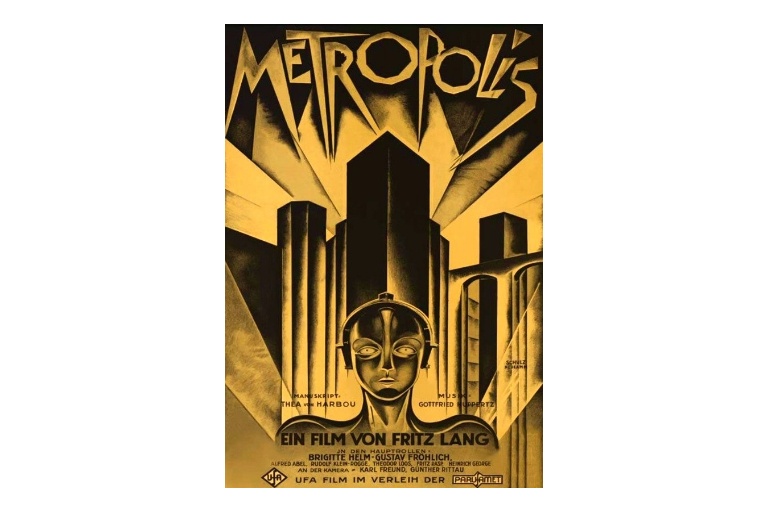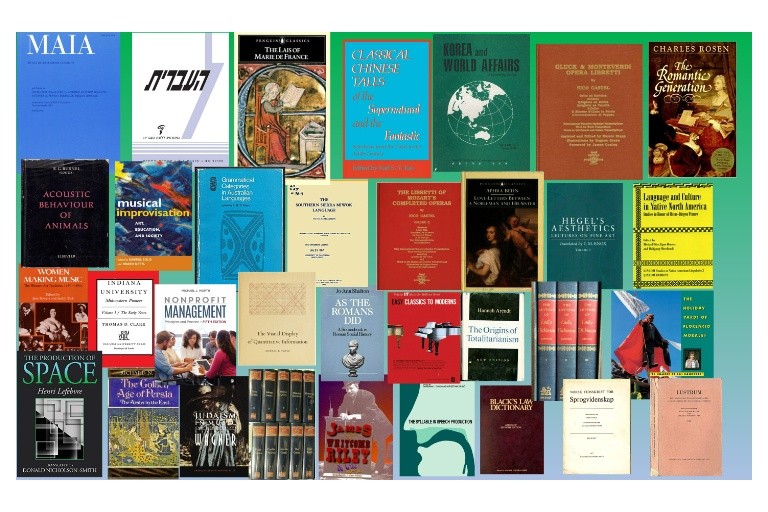
The film Metropolis by Fritz Lang and written by Thea von Harbou in collaboration with Lang
von Harboul’s 1925 is now in the Public Domain and free to watch on platforms
such as the Internet Archive and Alexander Street Press.
January 1, 2023, may have found you sleeping in from a 2022 hangover of accomplishments or a 2023 dream of the future, but many bibliophiles, cinephiles, audiophiles, and art lovers were busy celebrating Public Domain Day 2023 instead. Public Domain Day has crept into the realm of celebration within the last few decades. Today, it is touted by organizations such as HathiTrust, Project Gutenberg, and the Internet Archive that believe in the free distribution of art, education, and research. This January works published in the United States in 1927 entered the public domain.
What is the Public Domain? What is Copyright?
According to the Center for the Study of Public Domain, thousands of books, movies, and other art became free to use this new year. The Center anticipated, “On January 1, 2023, copyrighted works from 1927 will enter the US public domain. They will be free for all to copy, share, and build upon. These include Virginia Woolf’s To The Lighthouse and the final Sherlock Holmes stories by Arthur Conan Doyle, the German science-fiction film Metropolis and Alfred Hitchcock’s first thriller, compositions by Louis Armstrong and Fats Waller, and a novelty song about ice cream.”
When a work of art’s copyright expires, it enters the public domain. Creative works that were never copyrighted and U.S. government documents, which are public domain by law, are also in this sphere of free and shareable to all.
When something is still under copyright, you must receive permission to use it or obtain a license. Indiana University Libraries pays licensing fees for their databases for the use of copyrighted materials. The Libraries pays database distributors so that students may use the most up-to-date articles and instructors may use current data. You cannot simply copy a copyrighted book, painting, movie, or play. You cannot legally use someone’s work without their permission.
The duration of copyright varies from country to country and is based on either the date of the author’s death or the publication of the work. Considering that iconic writers may publish in various countries, you can see where copyright can become complicated. As Melissa Levine and her co-writers state in Finding the Public Domain: Copyright Review Management System Toolkit, “And yet, in an age of absolute fluidity of media and medium, even plain old books can be highly complex embodiments of copyright.”
What use is this Public Domain anyway?
During the “lockdown” portion of the pandemic, the public domain played an integral role for students, faculty, and researchers at Indiana University and around the world. For instance, if you were teaching early American Literature, many of the books you would need – from Nathaniel Hawthorne’s The Scarlet Letter to Charlotte Perkins Gilman’s The Yellow Wallpaper– were available electronically on databases such as Project Gutenberg for free simply because they were in the public domain.
during "lockdown" via HathiTrust.
Slide courtesy of librarian Bob Noel.
When students and faculty were scrambling to learn and teach online, HathiTrust created the Emergency Temporary Access Service (ETAS). Besides works in the public domain, if the IU Libraries owned a copyrighted item that was digitized in HathiTrust, ETAS allowed for library patrons to access it digitally. Looking back at the data, IU Libraries Sciences Librarian Bob Noel found that from April 1, 2020 – August 15, 2021, “There were 68,882 use events, with a total of 37,268 different items/books/ sets/ journal runs viewed by IU people.” Here at IUB, music materials were accessed more than any other subject through HathiTrust. According to Noel's statistical analysis which he published in the newsletter of The Physics-Astronomy-Mathematics Division (PAM) of the Special Libraries Association, the book most frequently used during the online portion of the pandemic for IU was Princeton historian Nell Irwin Painter's Creating Black Americans : African-American history and its meanings, 1619 to the present.
Another vital use of public domain is the movement toward Open Education Resources. Like other academic university libraries, IU Libraries is involved in making educational materials and resources more affordable for college students. To that end, Open Education Librarian Sarah Hare and her team collaborate with instructors to create the best options for their classrooms. Some content is completely free and open while others have restrictions. Of course, if the material needed is in the public domain due to an expiring copyright, it falls into the free category, being a plus for both the instructor and students. OERs include both public domain content and copyrighted content that is licensed to be used freely.
IU Libraries and HathiTrust
HathiTrust was created in 2008, an initiative of the Big Ten Academic Alliance (BTAA), formerly known as the Committee on Institutional Cooperation (CIC), and the University of California system. The non-profit’s goal was to create a repository from the combined digital collections of its community. Currently, the repository contains over 17 million volumes and is the largest digitized collection managed by research libraries in the world. The mission of HathiTrust is “to contribute research, scholarship, and the common good by collaboratively collecting, organizing, preserving, communicating, and sharing the record of human knowledge.”
Being a charter member, the work of Indiana University Libraries staff and faculty can be found throughout the repository. A number of IUL staff have worked on the Copyright Review Management System (CRMS). HathiTrust states the service “offers reading access to the fullest extent allowable by U.S. copyright law.” To do this, CRMS employs copyright reviewers from partner institutions, 195 from 53 collaborating institutions so far according to the HathiTrust website. Started by the University of Michigan Library Copyright Office and supported by an Institute of Museum and Library Services grant, the CRMS is now operated by HathiTrust. Under the leadership of Melissa Levine, the CRMS created a toolkit and criteria for determining if a book was still under copyright or not. Before CRMS, there was no coordinated effort to tackle the complicated landscape of copyright.
Ryan Dubnicek, Digital Humanities Specialist, HathiTrust Research Center, recently visited IU Libraries and talked about the research center’s latest projects. He noted that 40% of HathiTrust’s materials are in the public domain. The research center, which is a virtual collaboration between the University of Illinois and Indiana University, creates tools such as data sets to make the HathiTrust digital library as useful as possible. Currently, they are working on projects such as data mining using machine learning and creating work lists of underrepresented communities.
Interested in more resources? See below:
- Getting help with OER
- Course Material Fellowship Program for instructors
- IU Libraries Copyright Services

